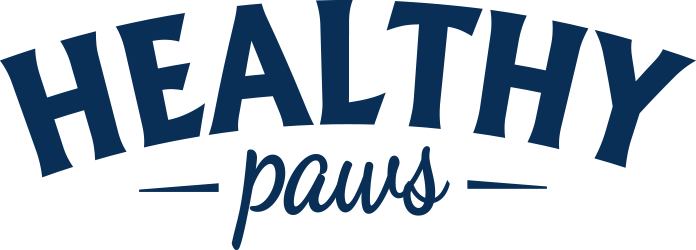Blog
Doggy Digestion
Dogs aren’t like humans, their stomach is like a concertina - all the food goes through the colon in a soft, sloppy state, containing lots of moisture and the nutrients the dog needs are absorbed into the body. It’s not until what’s left of the food reaches the rectum that the moisture is removed and it passes as solid, small poos. Indeed a wild dog, who is hunting for food might pass very few stools as he is using up all the nutrients in the food he’s catching. As the colon is much bigger than the rectum, if you’re over feeding then you’ll know about it because the first couple of poos excreted will be solid, dry and are true waste as all the nutrients have been absorbed, but then the dog will continue to produce poo where the first part is hard and the end of it is sloppy making it difficult to poop scoop.
Because of the better nutrition contained in Healthy Paws, you only need to feed 50% of the amount of some other premium foods and up to 60% of the amount of a standard supermarket food. This is why Healthy Paws can work out cheaper than most other foods, including supermarket brands. The recommended amount to feed your dog is given on the bag of Healthy Paws food, but for the optimum amount for your own dog, there’s no better way than to study their stools! A medium sized dog fed on Healthy Paws complete adult dog food costs approximately 60p per day to feed.
Some owners report that their dogs have begun to be quite picky about their food. Unfortunately, this is usually a result of something we humans have given them. A dog shouldn’t be picky if he or she’s being fed correctly. If you give a dog wheat, for example in a piece of your toast in the morning, then it will sit in its stomach all day and the dog will not be hungry for its food later. If your dog starts chewing its paws, that’s an easy sign that it’s been eating something containing wheat or wheat gluten which does not agree with its metabolism. Take a look at our YouTube channel for a video containing useful information about dog digestion.
We’re often asked whether dogs go off food – dogs don’t taste like humans, they have 600-1700 taste buds depending on their age, whereas we have 6000-9000. A dog’s sense of smell is just as important as their taste buds so if you think your dog is not showing as much interest in his food as previously one trick is to rub some garlic on the bottom of the bowl before you feed him. The dog will smell something different and interesting and will be encouraged to taste it, but you can still be confident that you’re feeding the right nutrients. If your dog starts to be picky, cut down the amount of food you’re feeding and put it in the oven for a few minutes to get warm – what that does is release an odour from the fat contained within it and be very appealing to your dog.
Because doggy digestion is not the same as human digestion, there are a few important things to watch out for – you might think it’s good to give your dog some chicken breast or steak now and again, but meat is full of phosphorus which absorbs calcium, too much phosphorus and the calcium is robbed from bones and teeth which can create problems with metabolic bone disease, so be very careful. Healthy Paws recipes are nutritionally balanced to give the right phosphorus/calcium ratio. Our recipes also use small quantities garlic and herbs to help deter fleas and worms and natural preservatives like rosemary and vitamin E. The complete dry dog food by Healthy Paws is also produced with a crunchy kibble that’s ideal for healthy teeth.
There’s a choice of four complete dry adult food recipes from Healthy Paws, take a look at the details before selecting the one you feel is best for your dog. Healthy Paws does also provide wet food, but remember that if a dog has 100 grams of dry food, he would need 500 grams of wet food to give the same nutritional benefit because of the moisture content of wet food (generally 80%). Wet food is a good option if a dog is convalescing, but normally a complete dry food is a good, nutritionally balanced choice.
Using treats
The use of treats can be very handy for dog training and rewards but remember that the quality of treats that you feed can impact on their digestion too. Don’t use treats containing wheat when you’ve been so careful to avoid it in their food. If your dog needs to lose weight, you need to reduce the amount of food given by the amount of treats given during a day.



